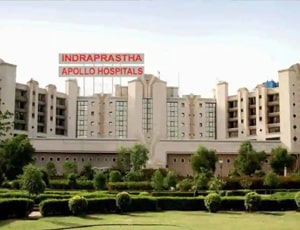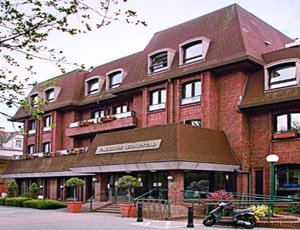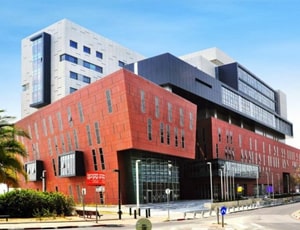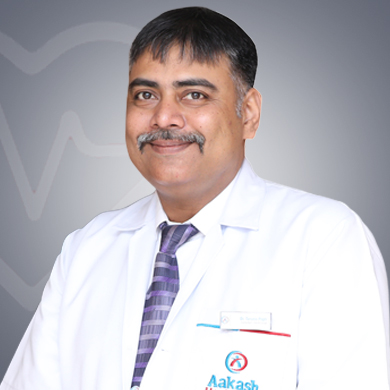The last part of the gastrointestinal system is referred as the colon and it is 5-6 cm long. It is ‘U’ shaped and it starts from the distal part of the small intestine and is connected to the rectum and anus. It absorbs the fluids, processes the metabolic waste products, and eliminates through the rectum and anus. The removal of the colon is called colectomy.
There are different types of colectomies such as complete colectomy, right hemicolectomy, left hemicolectomy, sigmoid colectomy, and proctocolectomy. The surgical removal of the left side of the colon (descending colon) is called left hemicolectomy surgery. The surgical removal of the cecum, ascending colon, and the hepatic flexure (right side of the colon) is called as the right hemicolectomy surgery.
Some of the conditions that require complete colectomy or hemicolectomy surgery include the following:
A hemicolectomy procedure can be performed as a laparoscopic or open surgery. The type of the surgery to be performed is decided by the surgeon during the evaluation and the decision depends on the age and the condition of the patient.
Sometimes the laparoscopic procedure can also be turned into open surgery, depending on the feasibility of the procedure with respect to safety and accuracy. Overall, the following parameters decide whether a laparoscopic or an open surgical procedure will be performed:
You will be informed by your surgeon about the type of surgical procedure that you will benefit you the most. You will be taken to the operating room, and blood pressure and breathing will be monitored.
You will be positioned in lithotomy Trendelenburg (modified Lloyd-Davis) position and your both arms will be abducted on arm boards. The legs will be placed in stirrups and soft padding will be placed underneath to prevent pressure and injuries to the skin and nerves.
After positioning, you will be given general anaesthesia so that you do not feel any pain during the procedure. Sometimes, a peripheral nerve block may also be given to control pain during and after the surgery.
You will be positioned in the supine position initially and later you may be taken to the Trendelenburg position (lying by facing upwards on a tilted bed with pelvis higher than the head).
After positioning, you will be administered general anaesthesia and an additional epidural block for pain management. The catheter will be placed for monitoring the urine output during and after the procedure. The laparoscopic right hemicolectomy procedure or open surgery can be performed, depending on the condition of the colon.
During the hemicolectomy procedure, your surgeon may take any of the following approaches:

Delhi, India
Equipped with more than 50 specialty institutes, Indraprastha Apollo was started with the vision of ...more
![]() Private Rooms
Private Rooms
![]() Translator
Translator
![]() Nursery / Nanny Services
Nursery / Nanny Services
![]() Airport Pick up
Airport Pick up

London, United Kingdom
History Parkside Hospital based in London is currently owned by Aspen Healthcare. Aspen Healthcare ...more
![]() Accommodation
Accommodation
![]() Airport Transfer
Airport Transfer
![]() Choice of Meals
Choice of Meals
![]() Interpreter
Interpreter

Tel Aviv, Israel
Assuta Medical Center is a leading private hospital in the capital city of Tel Aviv in Israel. Assut...more
![]() Accommodation
Accommodation
![]() Airport Transfer
Airport Transfer
![]() Choice of Meals
Choice of Meals
![]() Interpreter
Interpreter

Surgical Oncologist
Delhi, India
15 of experience
USD 45 for video consultation

Surgical Oncologist
Delhi, India
22 Years of experience
USD 28 for video consultation

General Laparoscopic Surgeon
Delhi, India
18 Years of experience
USD 28 for video consultation

Surgical Oncologist
Noida, India
10 Years of experience
USD 32 for video consultation
Q. Will I need to have a permanent stoma?
A. The stoma can be permanent or temporary, depending on the condition of the colon. If it has recovered, then the stoma will be removed.
Q. What are the risks associated with colectomy?
A. A colectomy may lead to infection, bleeding, and urinary dysfunctions. These may be avoided through proper care and maintenance of hygiene.
Q. Will I have a normal bowel after colectomy?
A. Yes, you will have a normal bowel movement after colectomy. You may have stoma if your colon is totally damaged.
Q. How long should I stay in the hospital?
A. You may need to stay for five to seven days in the hospital, depending on the type of the procedure used for colectomy.
Q. Which diet should I follow after the surgery?
A. You will be given nothing by mouth up to 24 hours of the surgery. After that, you will be on clear liquids and juices. After discharge, you should take soft diet for 2 to 3 weeks.
Q. Will I feel pain after the surgery?
A. You may not feel pain as anaesthesia and an epidural block will be given before the procedure. If you feel pain then an epidural will be given to relieve pain after the procedure.
Q. When can I start driving after the surgery?
A. You can start driving after two or three weeks of laparoscopic surgery, but you should wait for at least five weeks if you undergo open surgery.
Q.Can I take a shower after discharge?
A. Yes, you can take a shower, but you should not scrub on the incisions.